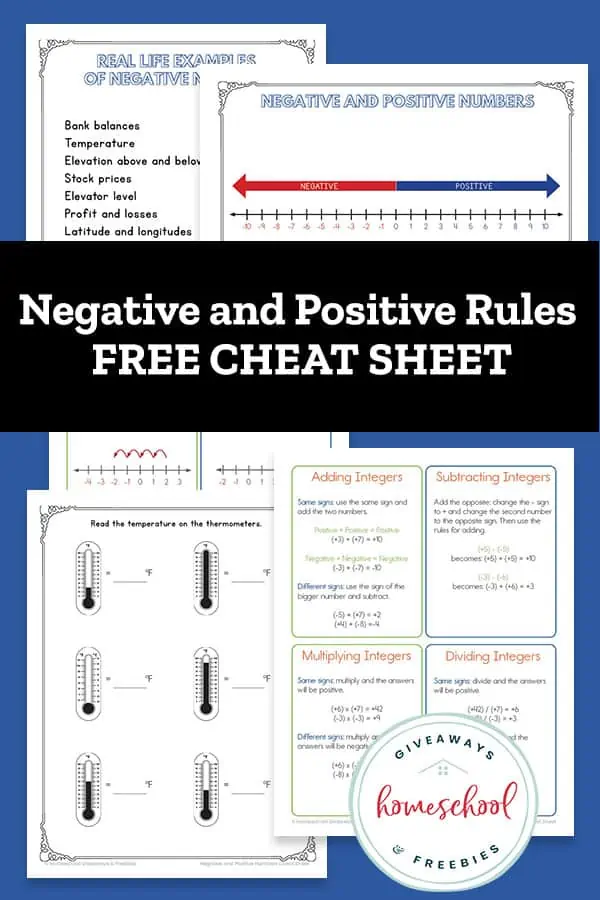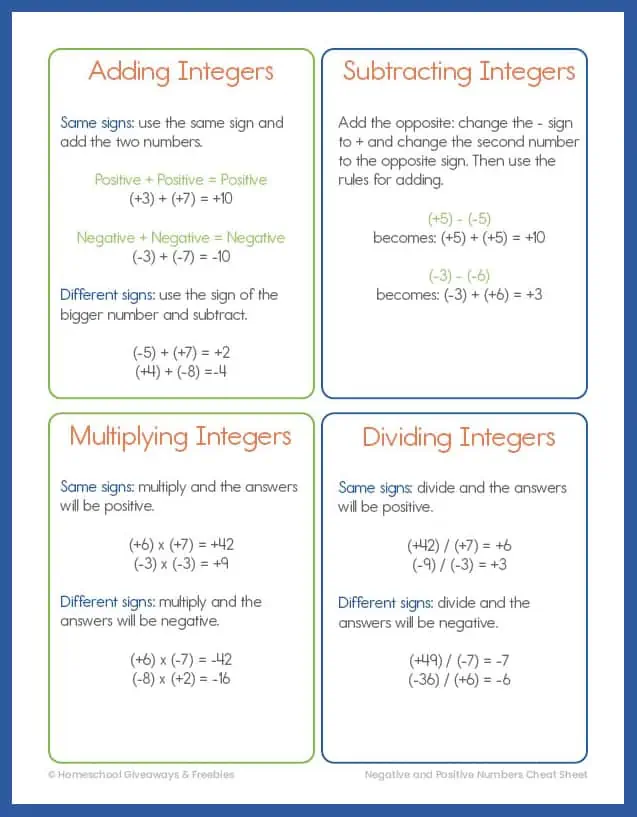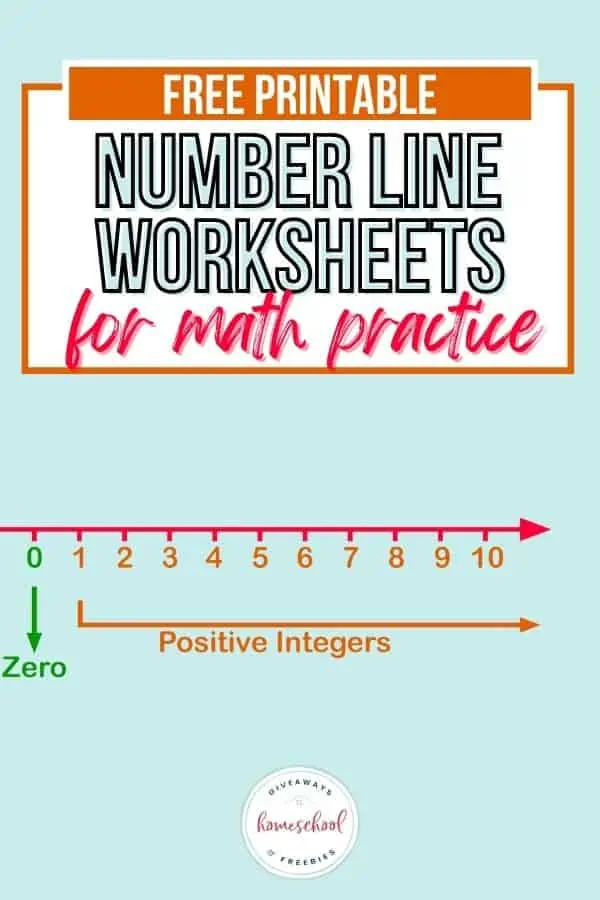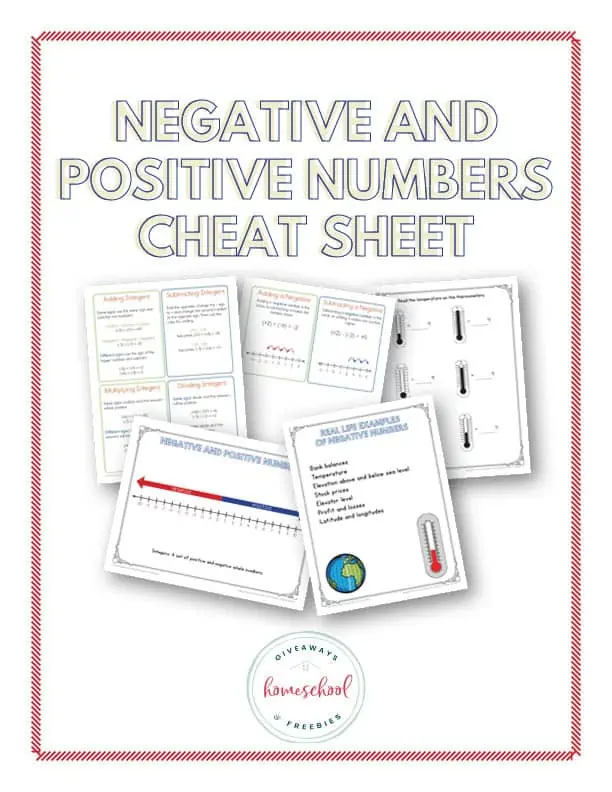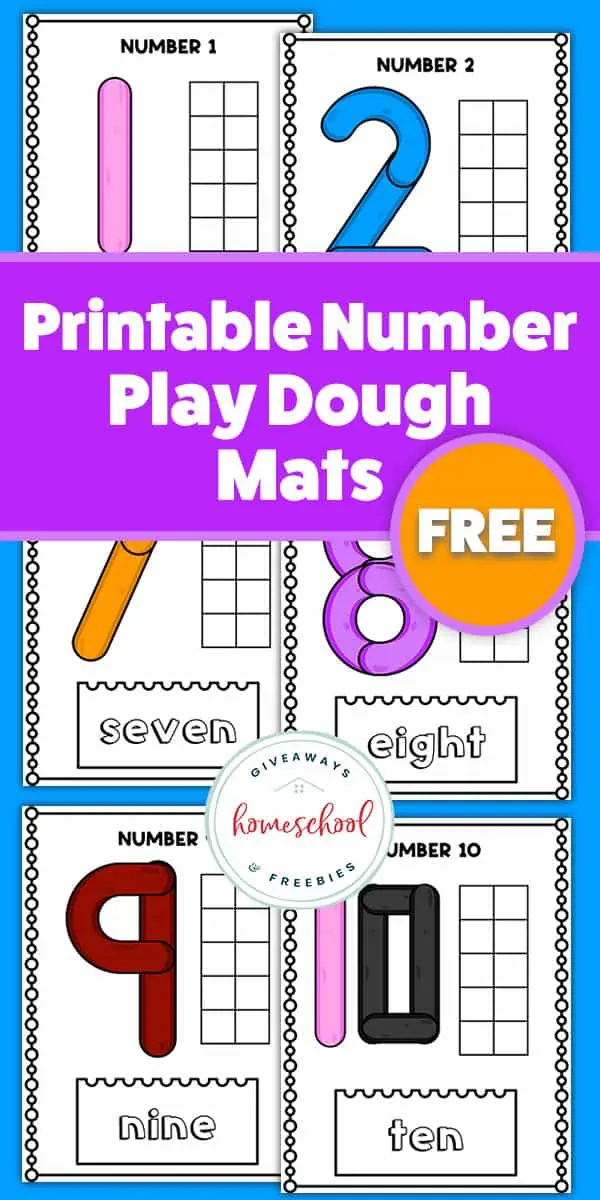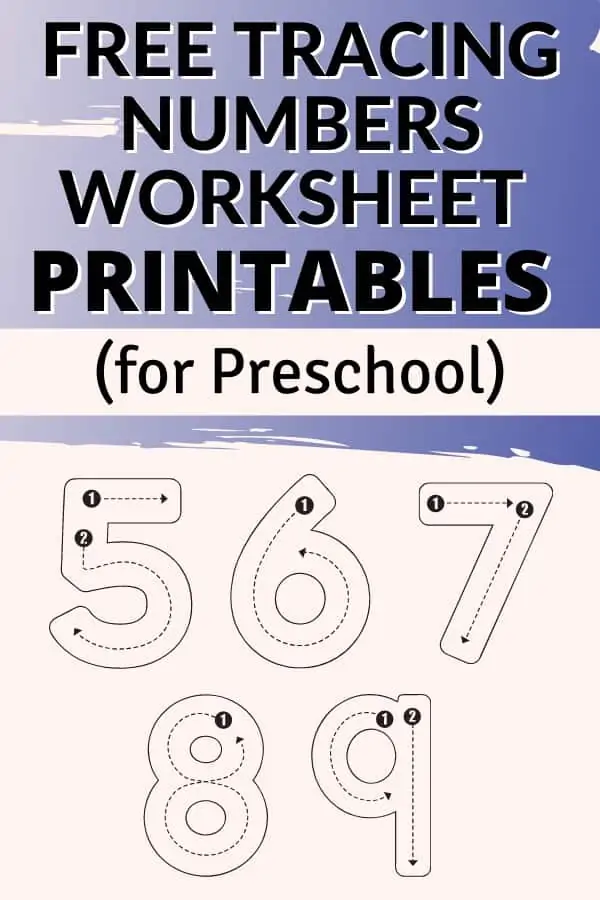Negtive and Positive Rules for Integers (Free Cheat Sheet)
Published:
December 20, 2022

Contributor:
Sarah Shelton
Disclosure: This post may contain affiliate links, meaning if you decide to make a purchase via my links, I may earn a commission at no additional cost to you. See my disclosure for more info.
Are you learning about positive and negative numbers in your homeschool? These can be confusing for some children, but when you give them the negative and positive rules they will gain a better understanding of the math concepts that are presented to them.
Negative and Positive Rules
Numbers lower than zero are called negative numbers. Numbers higher than zero are positive numbers. Both of those numbers will fall on either side of the number line, but they may not adhere to the same rules.
You can download some free number line worksheets to help students understand the concept of the number line. Additionally, a printable number chart 1 100 can also be helpful as well as an integers worksheet.
Rules for Positive and Negative Numbers
There are different ways for learning the rules for positive and negative numbers. Children need to know the number operations and what positive and negative and plus and minus signs are first.
The easiest way for children to grasp these concepts is also by practicing with negative integers and positive integers on a number line.
Free Negative and Positive Rules PDF
Be sure to scroll to the bottom of this post and download our free Negative and Positive Rules Pack. You’ll find a handy cheat sheet you can add to your math binder. It will be a great help to students who are trying to grasp the negative and positive rules.
Addition and Subtraction of Positive and Negative Numbers
There are some basic rules to remember when adding and subtracting positive and negative numbers together. When you have the same signs add the numbers together. If you have different signs, you subtract the numbers to get the answer.
When using positive and negative numbers, use the rules for signed numbers. These are the numbers with positive + or negative – signs in front of them. These numbers are called operations for signed numbers.
Adding Positive and Negative Numbers
There is a simple rule to add positive and negative numbers when they both have the same sign. You will need to find the sum of the numbers in the addition problem and then keep the sign.
- 1 + 2 =3
- (-2) + (-3) = -5
You can find the sum of a positive and negative number by subtracting the smaller number from the one with the larger value. The sign is that of the larger number.
Let’s look at the following examples:
- (-5) + 2 = -3
- (-2) + 6 = 4
- (-4) + 3 = -1
Remember, if there is no + or – sign, the number is going to be a positive answer.
Subtracting Positive and Negative Numbers
Subtraction rules for positive and negative numbers are similar to addition rules. When you have two positive numbers look at the first number. If it is larger than the second number it will be another positive number.
- 15 – 12 = 3
- 3 – 2 = 1
Multiplication and Division of Positive and Negative Numbers
The multiplication and division rules of positive and negative numbers is pretty easy to follow.
If both of the numbers are positive, the result is a positive number.
If both of your numbers are negative, the result is positive because the two negatives cancel out the others.
- The product of two positive integers is positive. (+3) x (+2) = +6
- The product of two negative integers is positive. (-5) x (-3) = +15
Let’s look at the following rules in action again:
- 3 x 4 = 12
- (-3) x (-4) = 12
- 2 x 8 = 16
- (-2) x (-8) = 16
What are the Four Rules for Multiplying Integers?
- Rule 1: Positive × Positive = Positive
- Rule 2: Positive × Negative = Negative
- Rule 3: Negative × Positive = Negative
- Rule 4: Negative × Negative = Positive
Rules for Dividing Positive and Negative Numbers
- Zero divided by any other numbers is always going to be 0.
- Any number that is divided by zero is the answer of infinity.
- A positive number divided by a positive number always equals a positive number. Example: 15 / 3 = 5
- A positive number divided by a negative number will equal a negative number. Example: -10 /2 = -5
- A negative number divided by a negative number equals a positive number. Example: -8 / -2 = 4
- If you are dividing several whole numbers, make sure to add up the number of negative signs. If there are an odd number of negative signs then the answer is going to be a negative answer. If there is an even number, the answer is going to be an even answer.
Negative and Positive Numbers FAQ
Here are some of the most frequently asked questions you may come across when trying to understand negative and positive numbers.
What is the rule when adding positive and negative numbers?
If a number has no sign then it means that it is a positive number. The real number 3 is a positive number of +3.
Adding positive numbers is simple addition. 2 + 3 = 5 is the same thing as (+2) + (+3 )= (+5) No extra addition rules apply.
What is the rule for adding 2 negatives?
To add 2 negative numbers you will add the absolute value of each number together, then put the negative sign in front. This is just like regular addition, except you are doing it in the opposite direction.
For example: 3 + 5 = 8 and – 3 + – 5 = -8
How do you determine if a number is positive or negative?
A number is positive if it is greater than zero. This would be shown with an addition sign to show that it is a positive sign number.
If the number is less than zero then it is a negative number. This will have a minus sign in front of it to show that it is negative.
Does dividing two negatives make a positive?
When you divide two negative numbers the answer (quotient) is positive.
Do negatives go to the right or left?
When you are looking at a number line the positive number goes to the right and the negative number to the left side of the number line.
More Math Resources
- Math Counters Worksheets – Do your kids work well with manipulatives? Print some!
- Color by Math Worksheets – Coloring by math is a great break from rgular math problems.
- Addition Coloring Worksheets – Kids love cute coloring pages. Why not have them color for math?
- Division Worksheets – Working on division? These printables are great for extra practice.
- Mixed Number Worksheets – Fractions are confusing for kids sometimes. Get extra practice with these freebies.
- Homeschool Math Curriculum – Looking for all the math curriculum choices available to you?
Free Negative and Positive Rules Cheat Sheet PDF
This free download is great for extra practice. It’s a handy reference for students who are working on negative and postive intergers in math.
You can login to our subscriber library to dowload these free templates of hearts. Not yet a subscriber? No problem! Sign up below to get access.
In Conclusion
Math can become a tricky subject when extra signs get added to the mix that your children will need to figure out. Sometimes this can cause children to clam up and shut down when they are doing math. Incorporating greater than less than activities is also a fun way to practice positive and negative numbers.
With lots of repetition, practice, number line worksheets and cheat sheets they will be on their way to mastering these new math skills.


